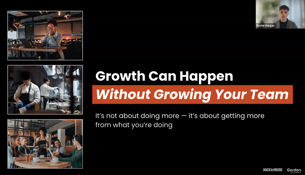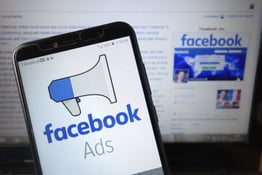Conventional wisdom says that the average restaurant marketing budget should fall between 3 and 6% of total sales revenue. But the full answer is a bit more nuanced than that. Factors such as the size and age of your business, the location of your restaurant, and your short-term and long-term business goals can all have a direct impact on how much of you should be spending on marketing at any given time.
Moreover, today’s restaurant marketing landscape is densely populated. Your marketing mix probably includes some combination of social media engagement, direct email campaigns, SEO management, influencer partnerships, loyalty programs, and print marketing. The mix of restaurant marketing channels you choose will naturally affect your budget.
The average restaurant marketing budget can provide you with a benchmark for reining in your marketing expenses. But it’s also important to draw up a marketing budget that reflects the unique realities of your business.
Key Factors Shaping Your Restaurant Marketing Budget
Your budget will be affected by a number of factors. Three of the most important are:
Business Maturity
The average restaurant marketing budget of 3 to 6% is based on the needs of an established business — one that has already made inroads in areas like brand recognition, repeat business, and customer loyalty.
However, a new business may need to invest a greater proportion of its revenue in these areas. The average marketing budget for a new or growing restaurant should be closer to 5 to 10% of projected revenue.
Location
As you determine your budget, think about how your location might affect your approach. Restaurants in urban areas may face heightened local competition. Restaurants in less populated areas may face difficulties creating visibility.
These factors should prompt some important marketing questions. Should you be investing more in local print ads? Diversifying your digital media mix? Hosting more community events?
Your answers will depend on the nature of the market you’re trying to hit. Likewise, these answers can help you calculate your marketing budget more precisely than you might by simply allocating a fixed percentage of your sales revenue.
Business Goals
While 3 to 6% of revenue may be the commonly accepted average restaurant marketing budget, this figure may not fully account for your unique situation and business goals. A highly rated, single-location BYOB with a six-month wait for reservations has different marketing needs than a national fast-casual chain set on expanding into new regional markets.
It may be possible for the established BYOB to remain successful and acclaimed while making a lower than average investment in marketing. The expanding chain may temporarily exceed the average restaurant marketing budget as it takes more aggressive steps to gain visibility in its new market.
Of course, every business has its own unique goals and challenges to manage. Look at yours as you set your budget.
How to Determine Your Marketing Budget
The factors highlighted above can play a part in shaping your marketing budget. But how can you determine the right marketing budget based on the specific needs of your restaurant?
- Calculate your revenue: The average restaurant marketing budget is between 3 and 6% of your restaurant’s budget; 5-10% if your restaurant is new to its market. Either way, the first step is to calculate your current revenue or, if your restaurant is relatively new, your projected revenue.
- Know where to find your target demographic: Your marketing expenses will be determined by the channels you use to promote your restaurant, which will depend on the nature of your target market.
For instance, if you’re targeting an older demographic, your best choice might be print media, but you’d reach a younger demographic through Instagram. Other audiences might respond to broadcast television or direct mail. The different costs of these channels will shape your budget.
- Set clear goals: What do you hope to achieve through your current marketing strategy? Are you focused on customer acquisition, brand recognition, or promoting a special event? Are you trying to sell a limited-time deal, spotlight a popular menu item, or manage your restaurant’s reputation?
All of these questions will help you to determine the overarching goals of a given marketing campaign. These goals should, in turn, help you determine how much of your budget to allocate for marketing.
- Track Your ROI: No matter what your budget is, it’s important to track your results. You need to know that you’re getting a good return on your investment, especially if your restaurant marketing budget exceeds the industry average. This requires a reliable way of tracking your marketing spend as it relates to real-world outcomes such as foot traffic, online orders, and repeat business.
It also means adjusting your marketing budget according to your findings — you’ll want to spend more on more effective channels, less on those that don't bring in customers.
The Hidden Costs in Your Marketing Budget
Especially if your marketing spend exceeds the average restaurant marketing budget, you need to figure out where the money is going. Most restaurants face hidden costs that can drive up the cost of marketing.
Website Development
An effective and well-designed website is ground zero for establishing a strong digital media presence. But restaurants often overlook the costs of building, launching, and maintaining websites that are attractive, fast, functional, and SEO-friendly.
For many restaurants — especially those in the early stages of development — working with an experienced third-party website builder can help dramatically offset these hidden costs.
Loyalty Programs
Establishing an effective loyalty program is Business 101 for courting repeat customers. But designing, distributing, tracking, and implementing a loyalty program can actually be quite demanding.
Loyalty programs are great in theory. In practice, they require a lot of logistical oversight and in-house legwork. This can add up to lost productivity, mistakes, and frustration on the part of both staff and customers.
Vendors who offer comprehensive loyalty program management can help offset these costs by steering, streamlining, and simplifying your restaurant’s loyalty program.
Email and SMS Marketing
Even in today’s fragmented and rapidly evolving digital marketing space, there are not many methods of outreach that can compete with a good personal contact list. Direct email and SMS marketing are powerful tools for engaging a captive customer base. But the time, effort, and money spent on this engagement can add up.
A reputable third-party email marketing vendor can offset these expenses with easy-to-use outreach tools, ready-made email templates, omni-channel marketing, advanced data analytics, and more.
Help Is Available
If you are responsible for calculating and controlling your restaurant marketing budget, then you know the hidden costs above really only scratch the surface. Your marketing budget almost certainly also includes allocations for some mix of social media, print media, and broadcast media. And how you choose to manage these expenses will determine just how much of your sales revenue is ultimately spent on marketing.
If you’re looking for ways to get your marketing spend under control, talk to one of our experts about the technology that can help.





